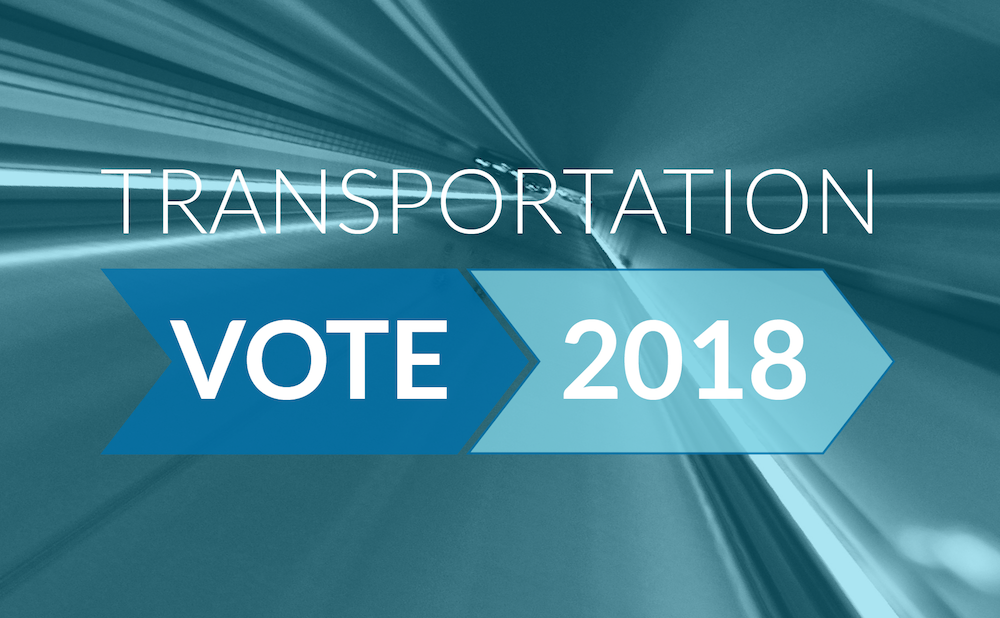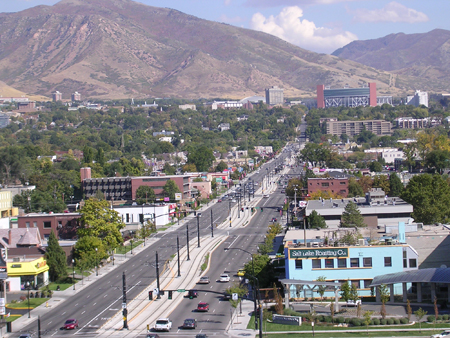
Smarter transportation case study #8: Bus Rapid Transit Priority in Salt Lake City, Utah
Rapid growth and a growing tourism industry prompted Salt Lake City officials to bring increased efficiency and connectivity to the area’s bus system.
A rapidly growing tourism industry, increasing diversity and economic growth in downtown prompted Salt Lake City officials to improve mobility options throughout the region. The Salt Lake City metropolitan area has a population of just over one million people, with roughly 200,000 living in the city proper.
Salt Lake City made infrastructure improvements to connect regional bus routes to existing transportation networks, like the regional light rail system. Designed to mimic the efficiency of light rail, the bus rapid transit system leveraged the city’s transportation network to provide convenient and reliable travel options. The MAX Bus Rapid Transit System began in 2008 by incorporating bus-only lanes and track signal priority for buses along the entirety of the system’s 10.8-mile bus route. Buses have the right-of-way at intersections and track signal detection helps turn lights green as buses arrive. Along the most congested portions of the route, buses run in both directions in a dedicated center lane, allowing them to bypass cars. These innovative technologies keep trip travel time to a minimum and hold fuel costs in check, while maintaining a high standard for safety.
The MAX Bus Rapid Transit System began in 2008 by incorporating bus-only lanes and track signal priority for buses along the entirety of the system’s 10.8-mile bus route. Buses have the right-of-way at intersections and track signal detection helps turn lights green as buses arrive. Along the most congested portions of the route, buses run in both directions in a dedicated center lane, allowing them to bypass cars. These innovative technologies keep trip travel time to a minimum and hold fuel costs in check, while maintaining a high standard for safety.
The system utilizes payment centers located on the bus, including user-friendly credit card machines, to allow passengers to quickly board the bus through one of three available doors.
The Utah Transit Authority plans to connect all the cities within the region to the light rail network with up to 80 miles of corridor routes within 20 years; 4,200 riders currently pass through the line’s 29 stops every day.
“This has the potential to become a piece of a future transportation spine,” Provo Mayor Lewis Billings said.
The MAX bus rapid transit line has seen a one-third increase in ridership and a 15 percent reduction in average travel time since 2008. The MAX line achieved a 97 percent on-time reliability rating on its very first day of operation, and now saves riders an average of 20 minutes per trip compared to an equivalent conventional bus driving the same route.
The project was awarded a “Smart Solutions Spotlight” from ITS America in June 2010.
For More Information: Deseret News
—-
Editor’s Note: Our new report on smarter mobility demonstrates how existing and emerging technologies can squeeze more capacity from over-burdened highways, help commuters avoid traffic delays and expand and improve transportation options, all while saving money and creating jobs. Many of these smart transportation solutions are already fueling innovation throughout the country, through both the public and private sector. These 14 case studies from around the U.S. and the world demonstrate the community benefits smart mobility solutions are giving regions, cities, and businesses.




